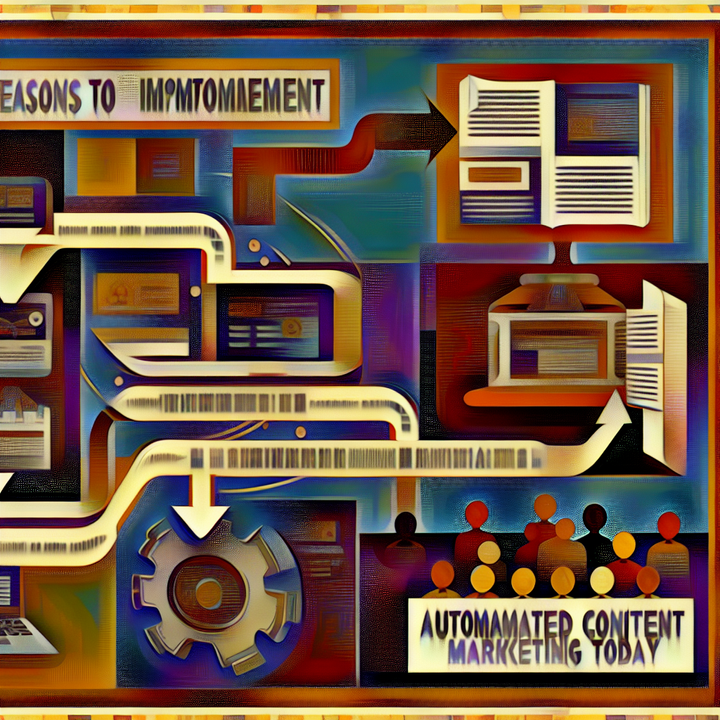Content Optimization: Unlocking the Power of Data-Driven Insights

Introduction
In today's digital landscape, content optimization is no longer optional—it's essential. With the vast amount of information available online, businesses must find ways to stand out and connect with their target audience effectively. The key to achieving this lies in leveraging data-driven insights to inform and refine content strategies. This comprehensive guide will explore the intricacies of content optimization, the role of data-driven insights, and practical steps to implement an effective content optimization strategy.
What is Content Optimization?
Content optimization involves adjusting and enhancing your digital content to achieve specific objectives. These objectives may include increasing visibility on search engines, improving user engagement, and driving higher conversion rates. The optimization process encompasses various elements, such as keyword usage, mobile-friendliness, page load speeds, and multimedia integration.
The Importance of Content Optimization
Enhanced Visibility
Optimized content ranks higher on search engine results pages (SERPs), making it more likely for users to find your website. High-ranking content drives organic traffic, which is crucial for sustainable growth.
Improved User Experience
Optimized content ensures that users have a seamless experience when interacting with your website. This includes fast loading times, easy navigation, and mobile-friendly design, all of which contribute to higher user satisfaction.
Increased Engagement
By providing valuable and relevant content, businesses can engage their audience more effectively. Engaged users are more likely to spend time on your site, explore your offerings, and eventually convert.
Higher Conversion Rates
Effective content optimization guides users through their journey, from initial interest to final conversion. By optimizing calls-to-action (CTAs), landing pages, and overall content structure, businesses can boost their conversion rates.
The Role of Data-Driven Insights
Data-driven insights are the cornerstone of successful content optimization. These insights are derived from analyzing various data sources, such as website analytics, social media metrics, and customer feedback. By understanding what works and what doesn't, businesses can make informed decisions to enhance their content strategies.
Types of Data Sources
- Website Analytics: Tools like Google Analytics provide detailed information on user behavior, traffic sources, and content performance. This data helps identify high-performing content and areas needing improvement.
- SEO Tools: Platforms like SEMrush and Ahrefs offer insights into keyword performance, backlink profiles, and search trends. These tools help businesses optimize their content for better search engine rankings.
- Social Media Metrics: Social media platforms provide data on user engagement, reach, and demographics. Analyzing this data helps tailor content to resonate with social media audiences.
- Customer Feedback: Direct feedback from customers, through surveys, reviews, and comments, provides valuable insights into their preferences and pain points. This feedback can guide content creation and optimization efforts.
Benefits of Data-Driven Content Optimization
Improved SEO
Data-driven insights help identify high-performing keywords and understand search trends. By integrating these keywords naturally into your content, you can improve your search engine rankings and attract more organic traffic.
Enhanced User Experience
Analyzing user behavior data reveals how users interact with your site. This information allows you to make adjustments that enhance usability, such as improving navigation, optimizing page load speeds, and ensuring mobile responsiveness.
Higher Conversion Rates
Understanding which content leads to conversions enables you to craft more effective calls-to-action and streamline the customer journey. By aligning content with user intent, you can drive more conversions and achieve your business goals.
Personalized Content
Data allows you to segment your audience and tailor content to meet the specific needs and preferences of different user groups. Personalized content is more engaging and relevant, leading to higher user satisfaction and loyalty.
Steps to Implement Data-Driven Content Optimization
1. Collect Data
The first step in content optimization is collecting data. Use analytics tools to gather information on your current content performance. Key metrics to track include:
- Page Views: The number of times a page has been viewed.
- Bounce Rate: The percentage of visitors who leave your site after viewing only one page.
- Average Session Duration: The average amount of time users spend on your site.
- Conversion Rate: The percentage of visitors who complete a desired action, such as making a purchase or filling out a form.
2. Analyze Data
Once you have collected the data, the next step is to analyze it to identify patterns and insights. Look for trends in user behavior, such as which pages are most popular, which keywords drive the most traffic, and which content leads to conversions.
3. Optimize Content
Based on your data analysis, make data-informed changes to your content. Here are some key areas to focus on:
- Keywords: Identify high-performing keywords and integrate them naturally into your content. Avoid keyword stuffing, as it can negatively impact user experience and search rankings.
- Readability: Ensure your content is easy to read and understand. Use short sentences, bullet points, and subheadings to break up the text.
- Multimedia: Incorporate images, videos, and infographics to make your content more engaging. Multimedia elements can also improve your search engine rankings.
- Mobile-Friendliness: Optimize your content for mobile devices. Ensure that your website is responsive and that content displays correctly on all screen sizes.
- Page Load Speed: Improve your page load speed by compressing images, leveraging browser caching, and minimizing JavaScript and CSS files.
4. Monitor Results
Content optimization is an ongoing process. Continuously track the performance of your optimized content and make further adjustments as needed. Use A/B testing to compare different versions of your content and determine which one performs better.
Tools for Data-Driven Content Optimization
Several tools can help you collect and analyze data for content optimization. Here are some popular ones:
Google Analytics
Google Analytics is a powerful tool that provides detailed insights into your website's performance. It offers data on user behavior, traffic sources, and conversions, helping you make informed decisions about your content strategy.
SEMrush
SEMrush is an all-in-one marketing tool that offers insights into keyword performance, backlink profiles, and search trends. It helps businesses optimize their content for better search engine rankings.
Ahrefs
Ahrefs is an SEO tool that provides data on keywords, backlinks, and content performance. It helps businesses identify high-performing content and optimize their content strategy.
HubSpot
HubSpot offers a range of tools for content optimization, including SEO recommendations, content analytics, and A/B testing. It helps businesses create and optimize content that drives engagement and conversions.
Moz
Moz offers tools for keyword research, link building, and site audits. It helps businesses improve their search engine rankings and optimize their content strategy.
Case Studies: Successful Data-Driven Content Optimization
Case Study 1: HubSpot
HubSpot, a leading marketing and sales platform, uses data-driven insights to optimize its content strategy. By analyzing data from Google Analytics and their own tools, HubSpot identified high-performing blog posts and updated them with new information and keywords. This resulted in a significant increase in organic traffic and leads.
Case Study 2: Buffer
Buffer, a social media management platform, used data-driven insights to improve their blog's performance. By analyzing user behavior data, Buffer identified the types of content that resonated most with their audience. They then focused on creating more of that content, resulting in higher engagement and traffic.
Case Study 3: Netflix
Netflix uses data-driven insights to optimize its content recommendations. By analyzing user viewing data, Netflix can recommend shows and movies that are likely to interest each user. This personalized approach has significantly improved user engagement and retention.
Challenges in Data-Driven Content Optimization
While data-driven content optimization offers many benefits, it also comes with challenges. Here are some common ones:
Data Overload
With so much data available, it can be overwhelming to determine which metrics to focus on. It's important to identify the key metrics that align with your business goals and prioritize them.
Data Accuracy
Ensuring the accuracy of your data is crucial. Inaccurate data can lead to misguided decisions and ineffective optimization efforts. Use reliable tools and regularly audit your data to maintain its accuracy.
Implementation
Implementing data-driven insights can be challenging, especially if you lack the necessary skills or resources. Consider investing in training or partnering with experts to effectively execute your content optimization strategy.
Future Trends in Content Optimization
As technology evolves, so do the methods and tools for content optimization. Here are some future trends to watch for:
Artificial Intelligence (AI)
AI is playing an increasingly important role in content optimization. AI-powered tools can analyze vast amounts of data and provide actionable insights, helping businesses optimize their content more efficiently.
Voice Search
With the rise of voice-activated devices, optimizing content for voice search is becoming crucial. This involves using natural language and long-tail keywords to match the way people speak.
Video Content
Video content is becoming more popular, and optimizing it for search engines is essential. This includes using relevant keywords in titles and descriptions, adding transcripts, and optimizing video load times.
User Experience (UX)
User experience is becoming a key factor in content optimization. Search engines are prioritizing websites that offer a seamless and engaging user experience. Focus on improving site speed, mobile-friendliness, and overall usability.
Conclusion
Content optimization powered by data-driven insights is a powerful strategy for enhancing your online presence. By leveraging data to inform your content decisions, you can improve your search engine rankings, engage your audience, and drive higher conversion rates. Remember, content optimization is an ongoing process that requires continuous monitoring and adjustments. Stay updated with the latest trends and tools to keep your content strategy effective and competitive. Start integrating data into your content strategy today and unlock the full potential of your digital marketing efforts.



